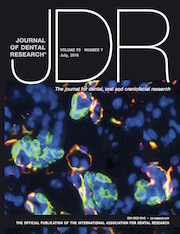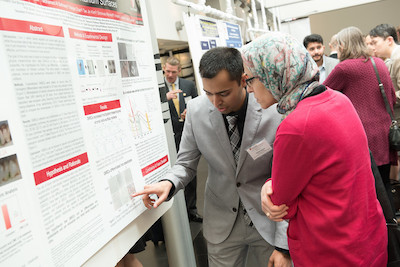SDM Researcher Proves Identification of Stem Cells in the Secretory Complex of Salivary Glands
 August 2016-Dr. Soosan Ghazizadeh, with assistance from her graduate student, Mingue Kwak, Oral Biology, have successfully identified a stem cell population in the salivary gland and the completed research paper is the cover story for the July issue of the Journal of Dental Research, an international publication focusing on groundbreaking research discoveries.
August 2016-Dr. Soosan Ghazizadeh, with assistance from her graduate student, Mingue Kwak, Oral Biology, have successfully identified a stem cell population in the salivary gland and the completed research paper is the cover story for the July issue of the Journal of Dental Research, an international publication focusing on groundbreaking research discoveries.
Salivary glands have an essential secretory function for maintaining oral and overall health. The epithelial compartment of the gland is composed of several highly specialized cell types that cooperate to secrete and deliver saliva to the oral cavity. The mouse submandibular gland has been used as a model for major salivary glands in human. The secretory complex in this model is composed of 2 secretory compartments, including acini and granular ducts connected by intercalated ducts. Contractile myoepithelial cells surround the secretory complex to facilitate salivary flow. Whether differentiated cells in the secretory complex are maintained by self-duplication or contribution from stem cells has remained an open question. In analyzing the expression of basal cytokeratin (K) 14 in the secretory complex, Dr. Ghazizadeh and Mr. Kwak discovered a subset of K14+ ductal cells in the intercalated ducts of the adult gland. These cells are distinct from the K14-expressing basal/myoepithelial cells, proliferate at a significantly higher rate than any other epithelial cell type in the gland, and reside in a spatially defined domain within the intercalated duct. Using inducible genetic lineage tracing, our researchers show that K14+ ductal cells represent a long-lived yet cycling population of stem cells that are established during development and contribute to the formation and maintenance of the granular ducts throughout life. Data proven by Dr. Ghazizadeh and Mr. Kwak provide direct evidence for the existence of stem cells contributing to homeostasis of salivary glands, as well as new insights into glandular pathobiology. Dr. Ghazizadeh received research funding from the NIH-NIDCR to support this research.

JDR Cover Credit: Journal of Dental Research Cover
2016, Vol. 95(7) 776 –783 © International & American Associations for Dental Research 2016 Reprint by permission: sagepub.com/journalsPermissions.nav DOI: 10.1177/0022034516634664 jdr.sagepub.com
Photos: Top: Mr. Mingue Kwak, graduate student in Oral Biology (during presentation of this reserach); Bottom: Dr. Soosan Ghazizadeh (on right) duirng Mickey and Leo Sreebny Reserach Day 2016.

